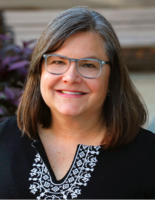World’s Fair 1964-65: Imagining the Future
Overview
Looming twelve-stories high over Flushing Meadows-Corona Park, and constructed of glistening stainless steel, the Unisphere (a model of the globe that still stands on the site today) welcomed over 51 million people to the New York World’s Fair of 1964-65. More importantly, it announced that America was eager to lead the world into a new modern age. And while the fair touted “Peace through Understanding” and was dedicated to “Man’s Achievements in an Expanding Universe,” it was also a keen expression of a particular mid-century brand of American cultural, political, and economic ambition and idealism. Against the ever-present tensions of the Cold War (which only a year prior had come dangerously close to becoming a hot war during the Cuban Missile Crisis), the fair’s design and exhibits articulated unwavering faith in the health of American corporate capitalism and robust consumerism, as well as in the possibilities of exploring “new frontiers” in space. Dazzling future-focused inventions, such as personal jet packs to IBM’s basic computer, coupled with atomic age aesthetics, such as the towering columns of architect Philip Johnson’s New York State Pavilion, wowed visitors into the belief in an ever-progressing American future. And yet, powerful social forces outside of the fair gates offered a compelling counter narrative.



Stephanie Yuhl has turned our understanding of the 1964-5 fair on its head. The confluence of corporate America, religions, and cultures, with the determination of Robert Moses as a driver, was fascinating to learn about. Professor Yuhl has such a great way of covering the vast topic.